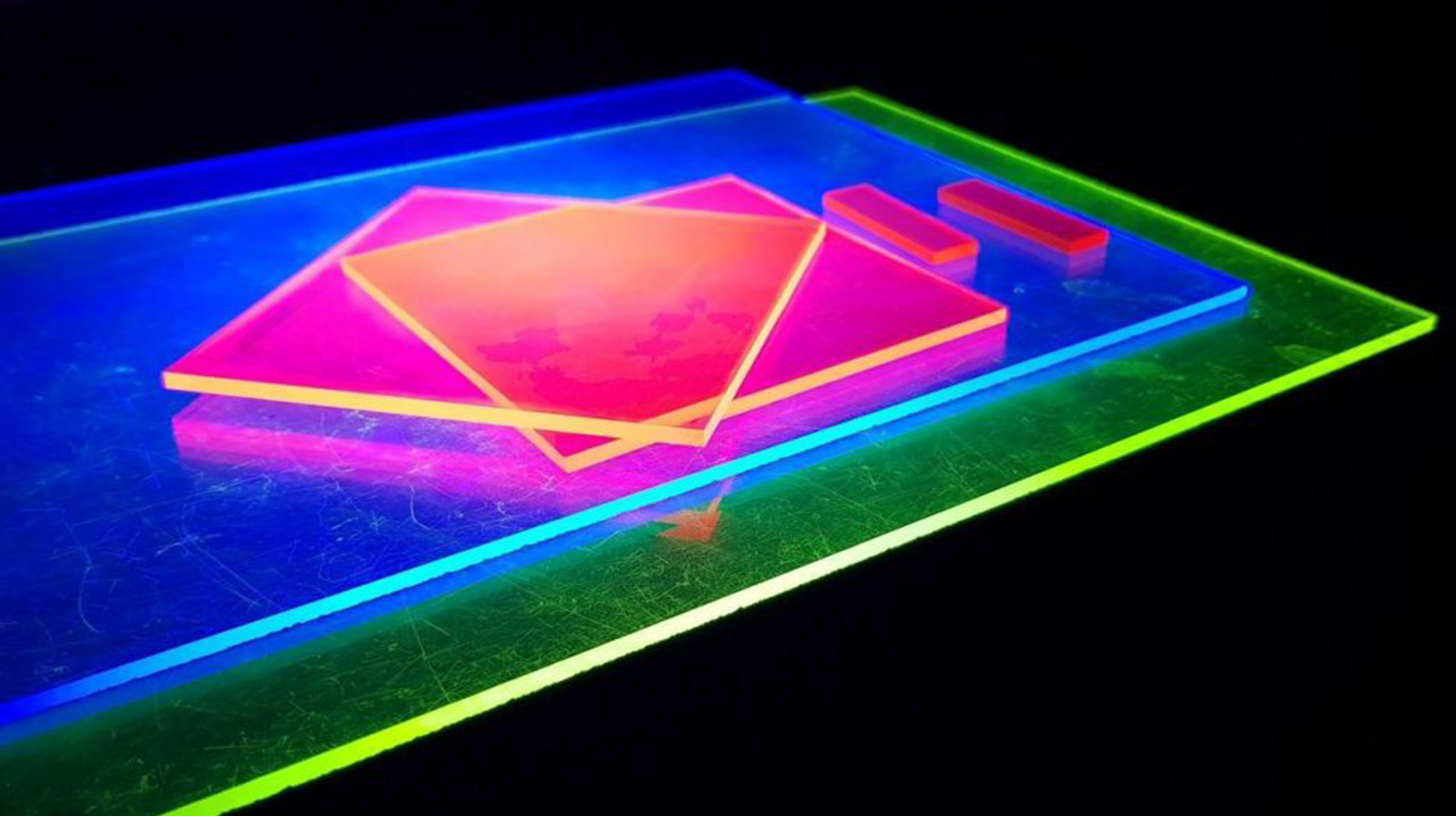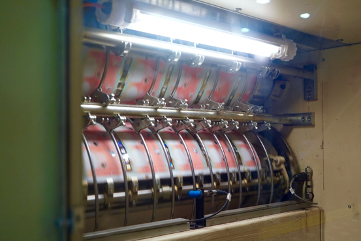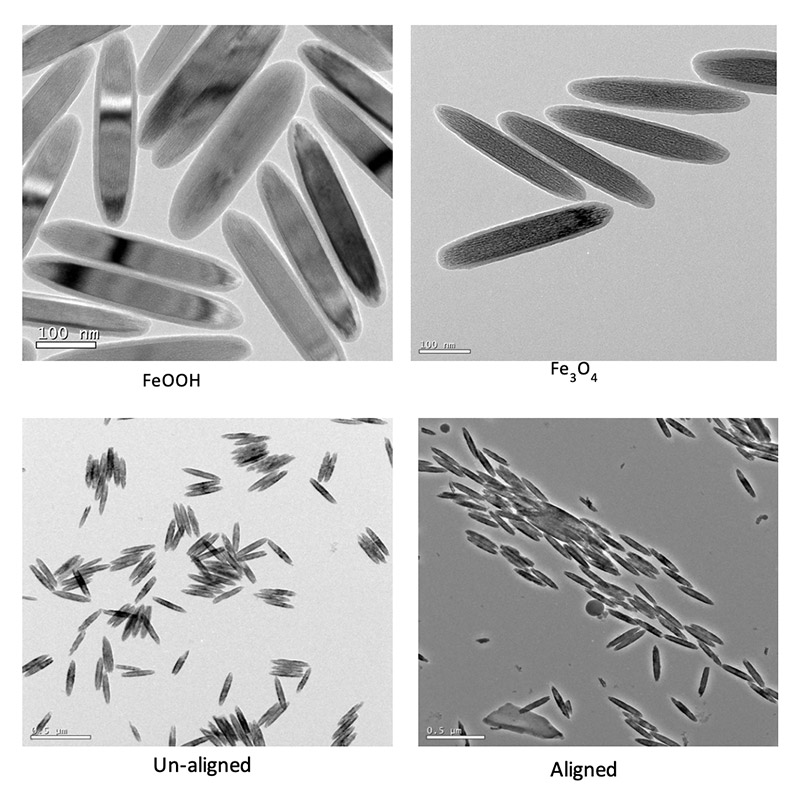

Platform Leader: Timothy James (RBA)
Deputy Platform Leader: Paul Mulvaney
Platform 3.2 is focused on the development of new optical security features for Australian polymer banknotes. We are developing unique optical and magneto-optical materials suitable for use as Machine Readable Features (MRF). The overarching goal is to produce banknote security features that are difficult to counterfeit and simple to verify. Such security features must be able to meet multiple requirements centred around issues of cost, efficacy, durability, printability, and public safety.
Australia leads the way in the development of polymer banknote technology. With improved access to lower cost technologies, more sophisticated forgeries have been discovered. In order to maintain confidence in the currency, development of new security features is needed. The most difficult of these are overt features. These features must be visible to the public or cash handler, who can use them to quickly determine if the note is genuine. They must be robust, printable, and difficult to replicate.
There are currently three projects under investigation. All of them involve development of novel, magnetic or infrared-active nanomaterials that could be incorporated into conventional security printing inks, ensuring these new technologies can be directly applied to banknote printing. There are plans to carry out a proofing print trial with the RBA and Note Printing Australia on at least one of the novel inks in early 2021. This will provide the Platform with real feedback on the ink performance under banknote production conditions, and banknote quality assurance processes. This first print trial process will enable the assessment of the scale-up process for these novel materials as the first step towards possible industrialisation, as well assessing the ink’s intended performance.
Chief Investigators
Partner Organisation
Successful LIEF Bid

| Name | Node |
|---|---|
| Jacek Jasieniak | Monash |
| Paul Mulvaney | UniMelb |
| Timothy James | Reserve Bank of Australia |
| Name | Node |
|---|---|
| Nicholas Kirkwood | UniMelb |
| Pegah Maasoumi | UniMelb |
| Name | Node | Student type |
|---|---|---|
| Heyou Zhang | UniMelb | PhD |
| Dingchen Wen | UniMelb | PhD |
| Trent Ralph | UniMelb | MSc |
The Nanoscience Laboratory is working on the synthesis of new optical materials that meet the RBA requirements in terms of optical response. These materials cover excitonic, magnetic and metallic nanoscale materials that can be integrated into inks for printing.
The Monash group is providing expertise on printing technologies. While the RBA has experience at large scale ink technologies, Monash has expertise at small scale newer techniques which can be used to achieve unique optical effects.
The Monash node was successful in an ARC 2020 LIEF bid that will provide small scale modular printing capabilities. This will be commissioned in 2020, with the opportunity of running small scale print trials using multiple printing approaches in-house.
The Platform has three projects running concurrently developing three separate banknote security feature concepts, where both magnetic and optical nanomaterials are being investigated for inclusion in banknote inks.
For Project 1, significant effort has been placed into the modelling of the magnetic and optical properties of magnetic nanomaterials with COMSOL Multiphysics, which provides a basis for designing materials with desirable properties. In addition, improved synthesis protocols have been developed for large-scale production of silica-coated magnetite as an orientable material in printable inks.
Project 2: A number of unique, infrared sensitive materials have been identified for investigation as machine readable features (MRFs). At least one of these materials is now moving into the scale-up phase. The primary requirement here is strong NIR absorption and low visible absorption or scattering.
Project 3: New NIR emitting materials are being sought which can offer a wide range of emission wavelengths ranging from 800-1700nm. There are few materials which have high quantum yields for emission in this spectral window. New classes of materials would provide RBA with a strong IP position and there are applications beyond banknote technologies for such materials.
There has been good progress in Platform 3.2 towards developing new banknote security feature ideas, with three distinct projects progressing well. Each project is critically evaluated at monthly Platform meetings, which has resulted in two potential security feature projects being stopped, as they were considered not viable due to previously patented approaches. The constant evaluation of projects under consideration demonstrates the rigor applied to the management of the Platform to ensure projects remain within the Platform scope. With regards to the Platform scope, the Platform remains on track to have at least two materials available for an RBA print trial in 2021.
The platform will recruit a new PhD student for the RBA-funded scholarship to work on the Up-Down Converter security feature (Project 3) and execute Mutual Confidentiality Deeds between the RBA and other institutions, in particular Monash and CSIRO, to facilitate the scale-up phase of the projects.
The platform will conduct a print trial for upscaled materials produced in Project 1 to see whether they can be produced at scale.
The platform will also reach Stage 5 in Project 1 (Iron Oxide Ink) and Project 2 (Infrared Inks), where the team hope to proceed to a print trial, and establish whether a patent will be viable.
The primary risks we believe the platform has are in the development of new materials that may not be scaleable or economic for use in banknote technologies.
There is also always the possibility when working with any industry partner that an institution’s research direction may change. The RBA specifically may identify this as necessary in response to changing international demands on currency protection.
There is also the potential that the research team will find it difficult to secure staff for key projects due to lack of domestic students qualified for the project or because of visa delays recruiting talented overseas staff.
While some of these factors are outside the direct control of the research team, having an understanding of their potential impact is key to designing contingency plans should they arise. The Centre’s regular platform review process helps us to identify these quickly, and to move towards a resolution if they arise.


Figure 1: Magnetic nanorods are made by silica encapsulation of FeOOH followed by reduction to magnetite. This material is a scaleable non-aggregating magnetic material.